Related Research Articles

Sir Joseph Banks, 1st Baronet, was an English naturalist, botanist, and patron of the natural sciences.
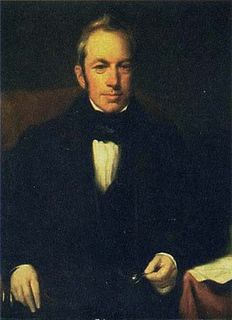
Robert Brown FRSE FRS FLS MWS was a Scottish botanist and paleobotanist who made important contributions to botany largely through his pioneering use of the microscope. His contributions include one of the earliest detailed descriptions of the cell nucleus and cytoplasmic streaming; the observation of Brownian motion; early work on plant pollination and fertilisation, including being the first to recognise the fundamental difference between gymnosperms and angiosperms; and some of the earliest studies in palynology. He also made numerous contributions to plant taxonomy, notably erecting a number of plant families that are still accepted today; and numerous Australian plant genera and species, the fruit of his exploration of that continent with Matthew Flinders.
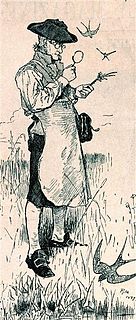
John Bartram was an early American botanist, horticulturist, and explorer. Carl Linnaeus said he was the "greatest natural botanist in the world."

Sir William Jackson Hooker was an English botanist and botanical illustrator, who became the first director of Kew when in 1831 it was recommended to be placed under state ownership as a botanic garden. At Kew he founded the Herbarium and enlarged the gardens and arboretum. The standard author abbreviation Hook. is used to indicate this person as the author when citing a botanical name.

Jean-Baptiste Louis Claude Théodore Leschenault de La Tour was a French botanist and ornithologist.
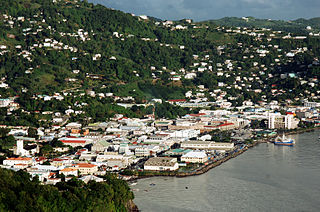
Kingstown is the capital, chief port, and main commercial centre of Saint Vincent and the Grenadines. With a population of 16,500 (2010), Kingstown is the most populous settlement in the country. It is the centre for the island's agricultural industry and a port of entry for tourists. The city lies within the parish of Saint George in the south-west corner of Saint Vincent.

John Lindley FRS was an English botanist, gardener and orchidologist.

Aylmer Bourke Lambert was a British botanist, one of the first fellows of the Linnean Society.
Heinrich Christian Friedrich Schumacher was a Danish surgeon, botanist and professor of anatomy at the University of Copenhagen. Schumacher carried out significant research work in malacology, in other words on molluscs, and assigned systematic names to many taxa.
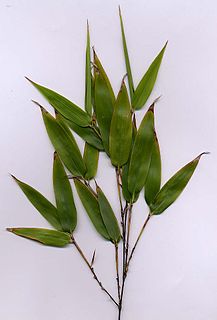
The Loddiges family managed one of the most notable of the eighteenth and nineteenth century plant nurseries that traded in and introduced exotic plants, trees, shrubs, ferns, palms and orchids into European gardens.

Bartram's Garden is a historic Philadelphia garden and arboretum in Philadelphia, Pennsylvania. Founded in 1728 by botanist John Bartram (1699–1777), it is the oldest surviving botanical garden in North America. Covering 46 acres (19 ha) with an 8-acre (3.2 ha) arboretum, the garden is near the intersection of 54th Street and Lindbergh Boulevard on the west bank of the Schuylkill River.

Robert Wight MD FRS FLS was a Scottish surgeon in the East India Company, whose professional career was spent entirely in southern India, where his greatest achievements were in botany – as an economic botanist and leading taxonomist in south India. He contributed to the introduction of American cotton. As a taxonomist he described 110 new genera and 1267 new species of flowering plants. He employed Indian botanical artists to illustrate many plants collected by himself and Indian collectors he trained. Some of these illustrations were published William Hooker in Britain, but from 1838 published a series of illustrated works in Madras including the uncoloured, six-volume Icones Plantarum Indiae Orientalis (1838–53) and two hand-coloured, two-volume works, the Illustrations of Indian Botany (1838–50) and Spicilegium Neilgherrense (1845–51). By the time he retired from India in 1853 he had published 2464 illustrations of Indian plants. The standard author abbreviation Wight is used to indicate this person as the author when citing a botanical name.
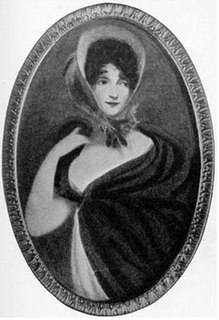
Jane Colden was an American botanist, described as the "first botanist of her sex in her country" by Asa Gray in 1843. Although not acknowledged in contemporary botanical publications, she wrote a number of letters resulting in botanist John Ellis writing to Carl Linnaeus of her work applying the Linnaean system of plant identification to American flora, for which botanist Peter Collinson stated "she deserves to be celebrated". Contemporary scholarship maintains that she was the first female botanist working in America. She was regarded as a respected botanist by many prominent botanists such as: John Bartram, Peter Collinson, Alexander Garden, and Carl Linnaeus. Colden is most famous for her untitled manuscript, housed in the British Museum, in which she describes the flora of the Hudson Valley in the Newburgh region of New York state, including ink drawings of 340 different species.

John Ellis aka Jean Ellis was a British linen merchant and naturalist. Ellis was the first to have a published written description of the Venus flytrap and its botanical name. The standard author abbreviation J.Ellis is used to indicate this person as the author when citing a botanical name.

The St Vincent and the Grenadines Botanic Gardens is located in Kingstown, Saint Vincent and the Grenadines. It is one of the oldest in the Western Hemisphere and perhaps the oldest in the tropical world. Conservation of rare species of plants has been practiced here since 1765. The Nicholas Wildlife Aviary complex located within the Gardens also maintains a captive breeding program to conserve the vulnerable Saint Vincent amazon.
Richard Weston was an English botanist.
William Lochead FRSE MWS was a Scottish surgeon and botanist. He served as the curator of the St Vincent Botanical Garden in the West Indies from 1811 to 1815, succeeding his friend Alexander Anderson.
Benjamin Heyne FLS was a German botanist, naturalist, and surgeon who worked in British India as a Botanist to Samalkot in the Madras Presidency under the British East India Company. He collected and described plants from southern India, many of which were named after him by European botanists.

John Bradby Blake was an English botanist. Working in China as a resident supercargo for the British East India Company, he sent seeds of local plants to Britain and the American colonies for propagation while also recording and studying Chinese plants and culture. Though he died at the age of 27, Bradby Blake left behind a rich archive of his work and correspondence that gives insight into cross-cultural interactions and botanical study in China at the time.
References
- ↑ "Young, George (-1803)". JSTOR Global Plants. Retrieved 7 November 2014.
- ↑ "Beginning of the Gardens (1765-1811)". Botanical Gardens St. Vincent & the Grenadines. Retrieved 31 December 2020.
- ↑ "Dr George Young". Botanical Gardens St. Vincent & the Grenadines. Retrieved 31 December 2020.
- ↑ Ellis, John (1773). Some Additional Observations on the Method of Preserving Seeds from Foreign Parts. London: W. Bowyer and J. Nichols. p. 10. Retrieved 7 November 2014.
- ↑ Howard, Richard A. (1997). "The St. Vincent Botanic Garden -- The Early Years" (PDF). Arnoldia. 57 (4 (Fall)): 13. Retrieved 7 November 2014.